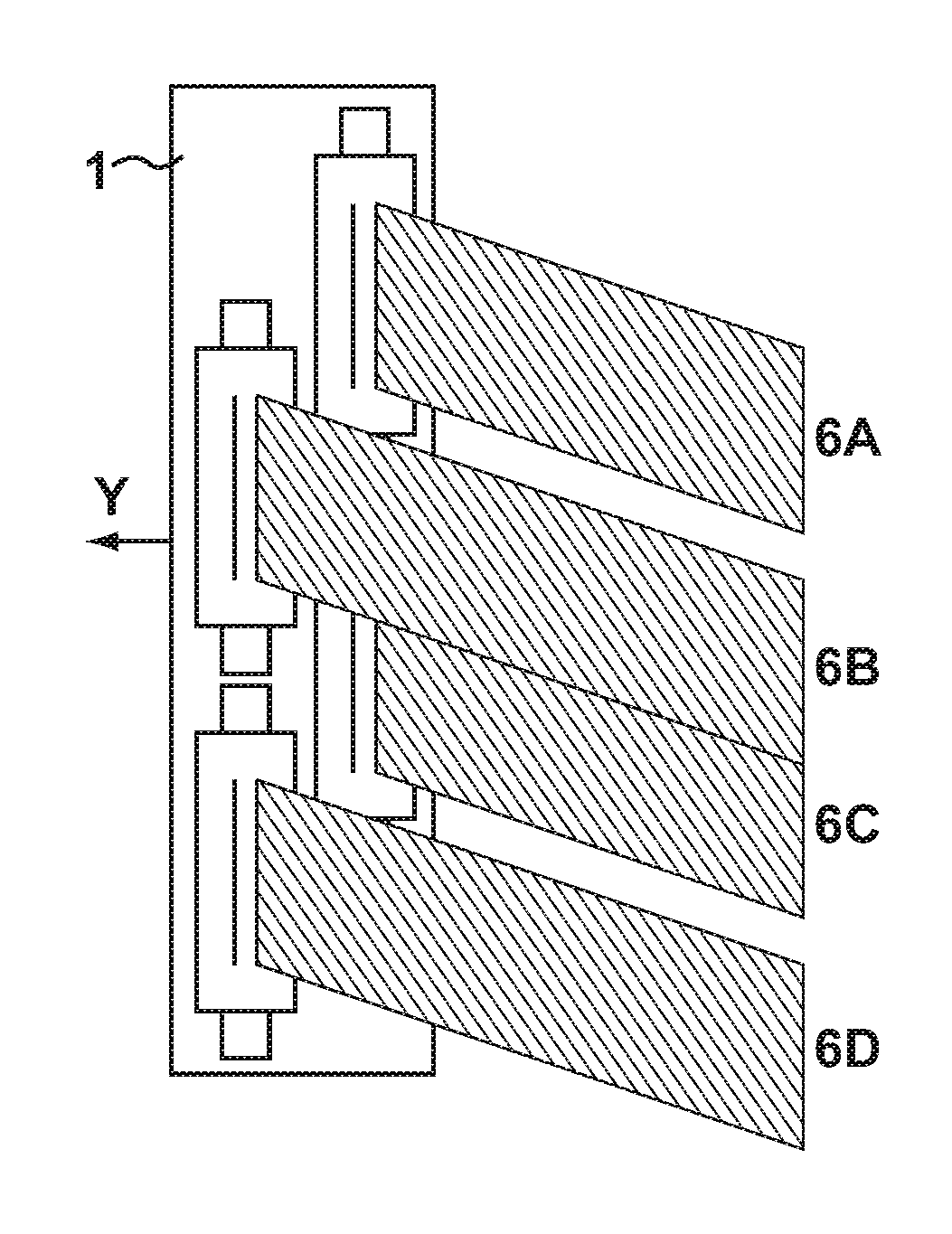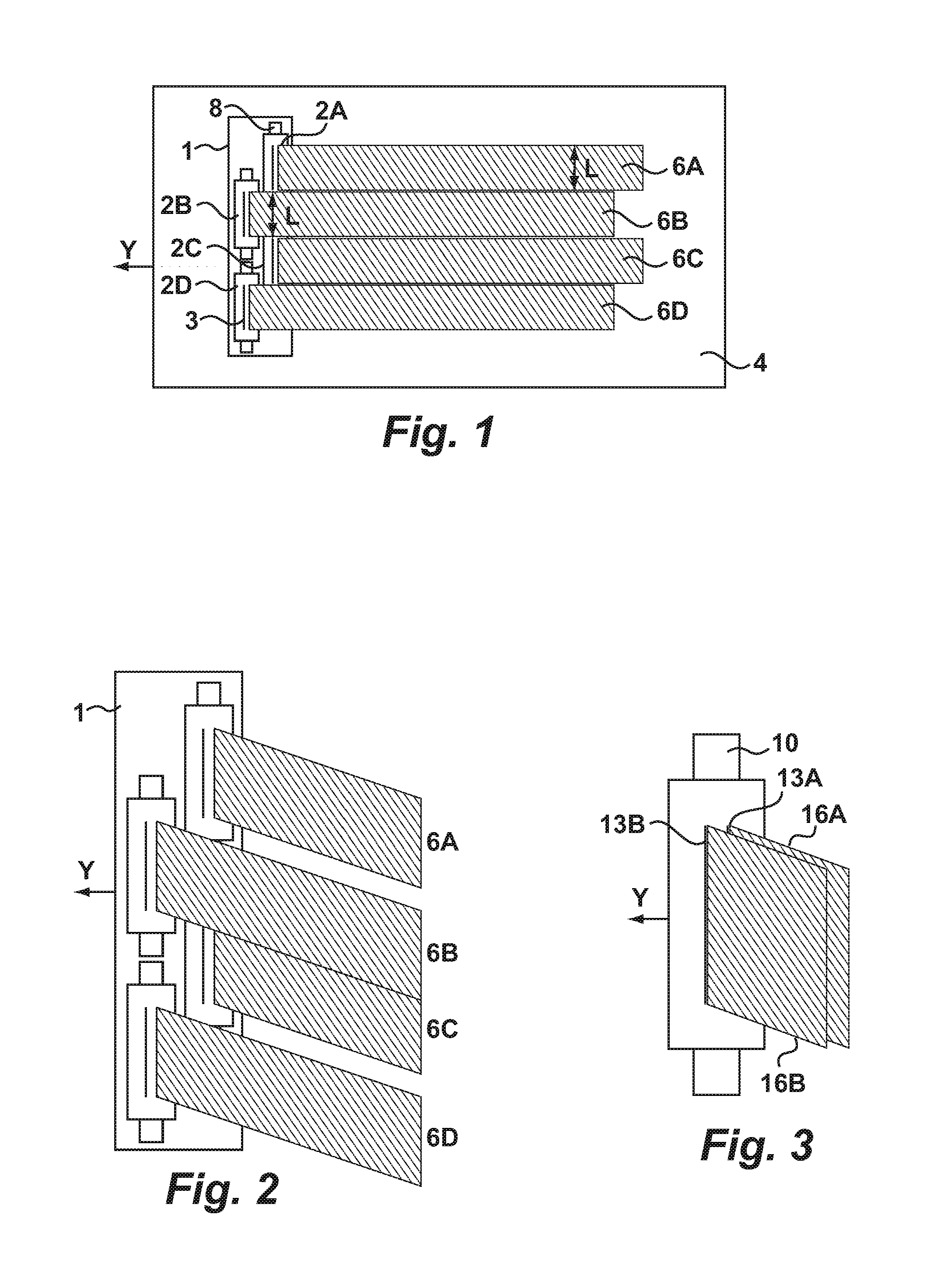Print head module
a printing head and module technology, applied in the direction of typewriters, power drive mechanisms, textiles and paper, etc., can solve the problems of large volume of product deposited, low flexibility and lack of redundancy in such a printing system, and high capital cost of the printing system, so as to reduce the calibration required at set-up and achieve the effect of reducing the amount of product deposited, reducing the possibility of deposition variations, and reducing the need for calibration
- Summary
- Abstract
- Description
- Claims
- Application Information
AI Technical Summary
Benefits of technology
Problems solved by technology
Method used
Image
Examples
Embodiment Construction
[0066]The following is a description of certain embodiments of the invention, given by way of example only and with reference to the drawings.
[0067]Referring to FIG. 1, a conventional print head module 1 is shown for printing broad swathes in a scan and step system. The module 1 comprises four heads 2A-D arranged in a staggered fashion in two parallel rows. Each head 2A-D has a plurality of dispensing nozzles 3 arranged in a line. The module 1 may be mounted to a carriage (not shown) for movement in a direction Y across a substrate 4 to deposit four swathes 6A-D. The spacing L between heads 2A and 2C corresponds to the length of head 2B such that swathe 6B precisely spans the gap between the swathes 6A and 6C. It is noted that L represents the active length of the head 2B over which the nozzles 3 are distributed. The physical head is actually longer than L due to the presence of fixation elements 8. In fact, it is the fixation elements 8 and the edge regions of the heads 2A-D that p...
PUM
| Property | Measurement | Unit |
|---|---|---|
| width | aaaaa | aaaaa |
| angles | aaaaa | aaaaa |
| length | aaaaa | aaaaa |
Abstract
Description
Claims
Application Information
 Login to View More
Login to View More - R&D
- Intellectual Property
- Life Sciences
- Materials
- Tech Scout
- Unparalleled Data Quality
- Higher Quality Content
- 60% Fewer Hallucinations
Browse by: Latest US Patents, China's latest patents, Technical Efficacy Thesaurus, Application Domain, Technology Topic, Popular Technical Reports.
© 2025 PatSnap. All rights reserved.Legal|Privacy policy|Modern Slavery Act Transparency Statement|Sitemap|About US| Contact US: help@patsnap.com



